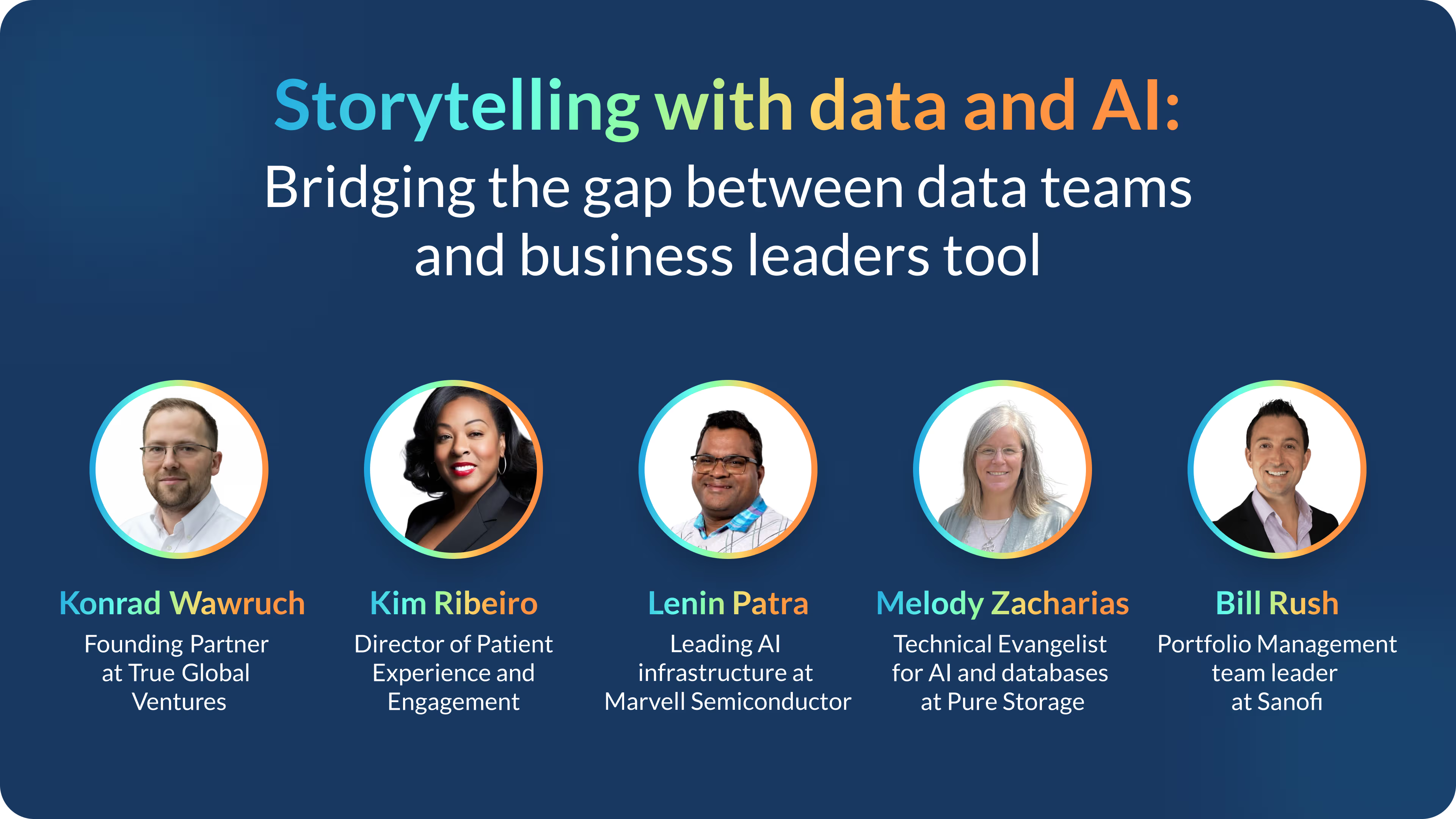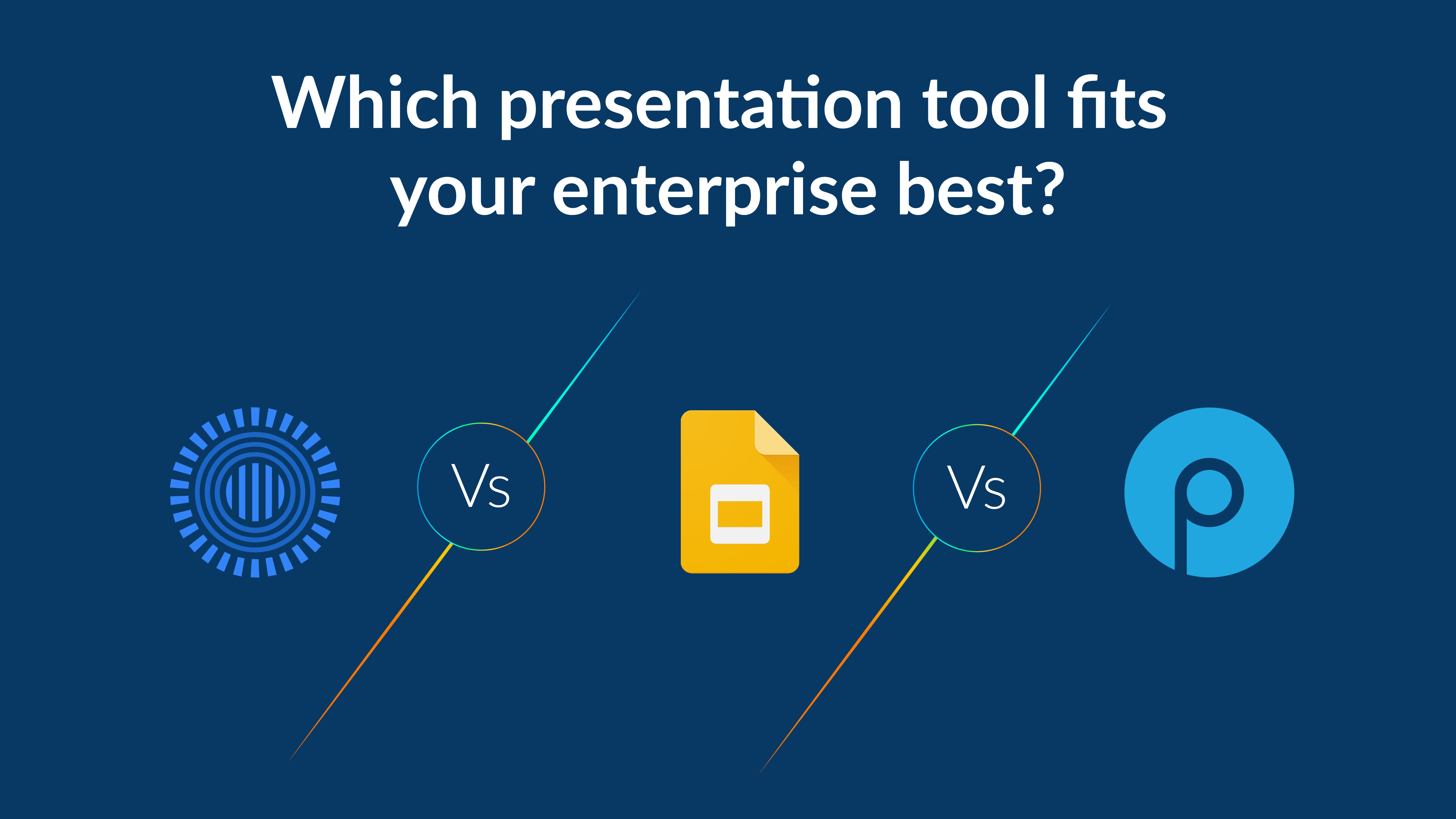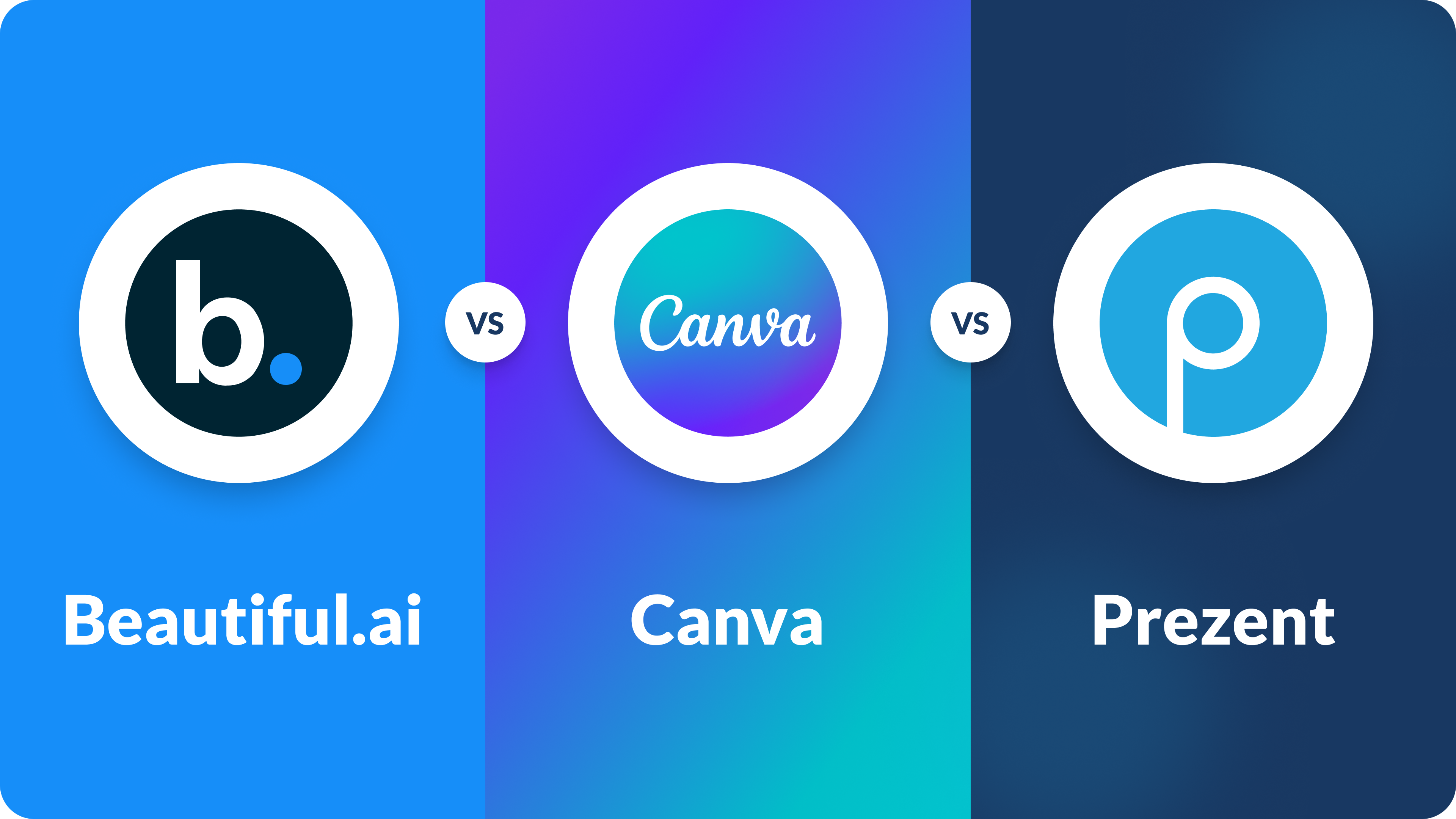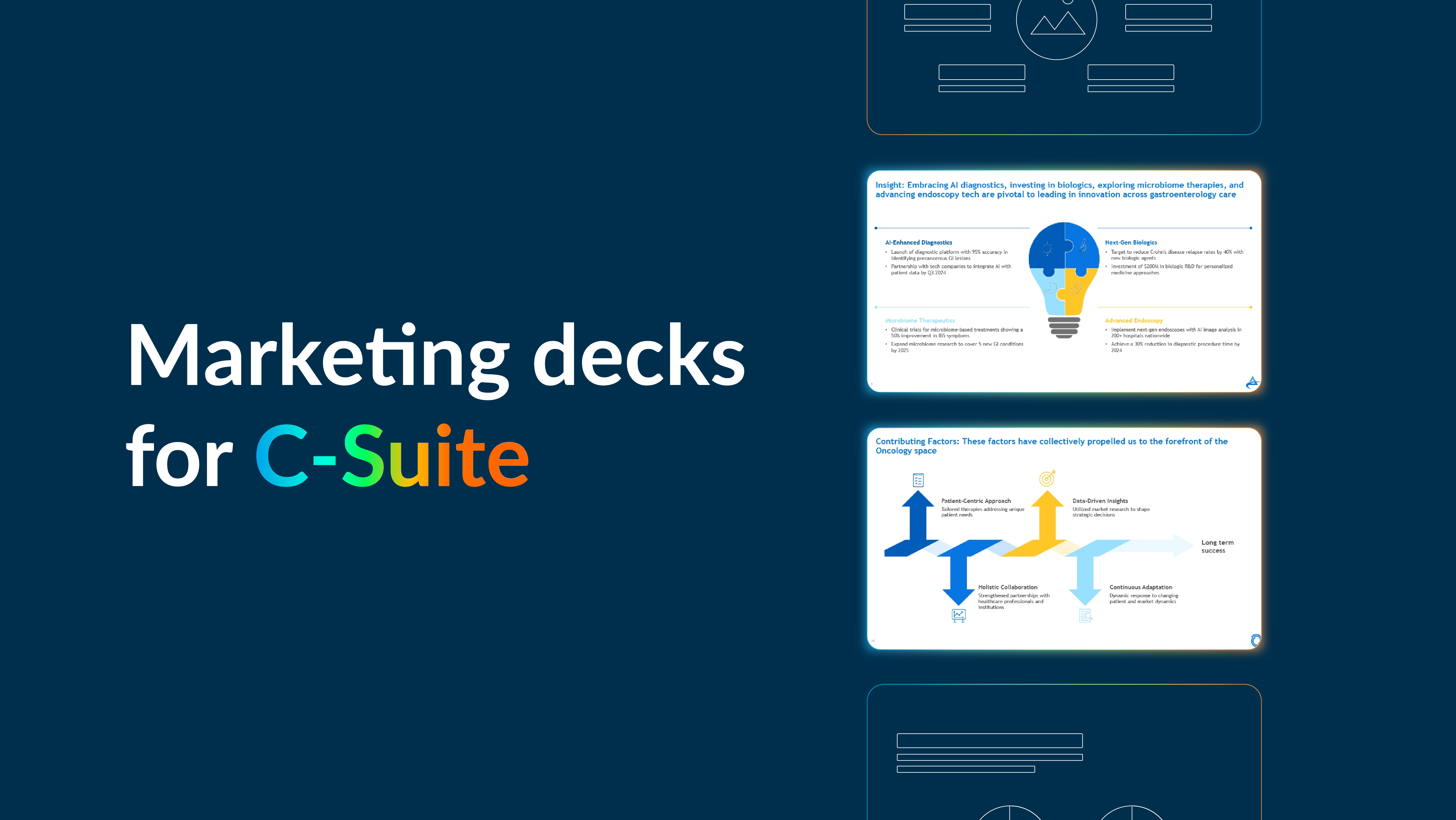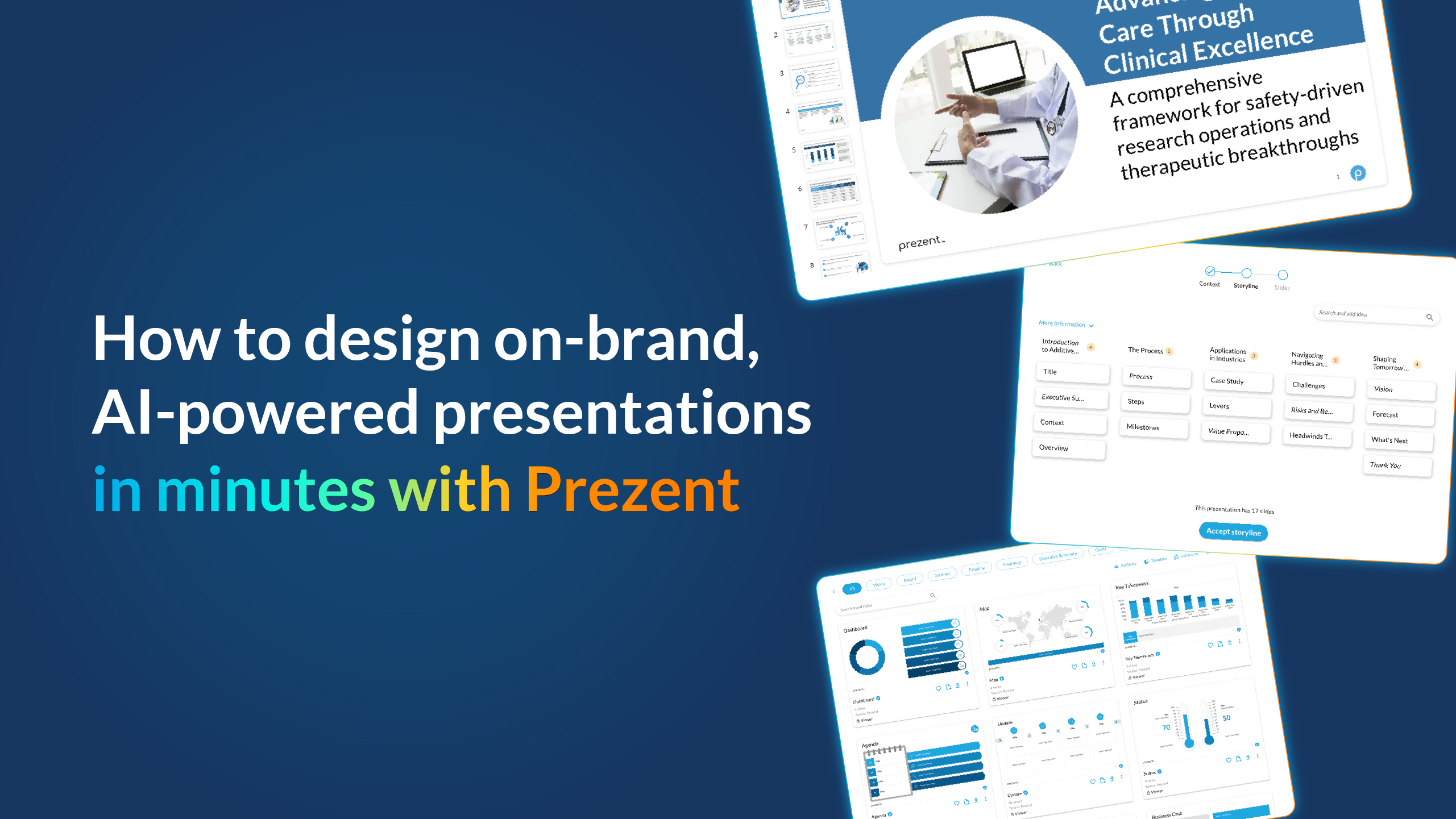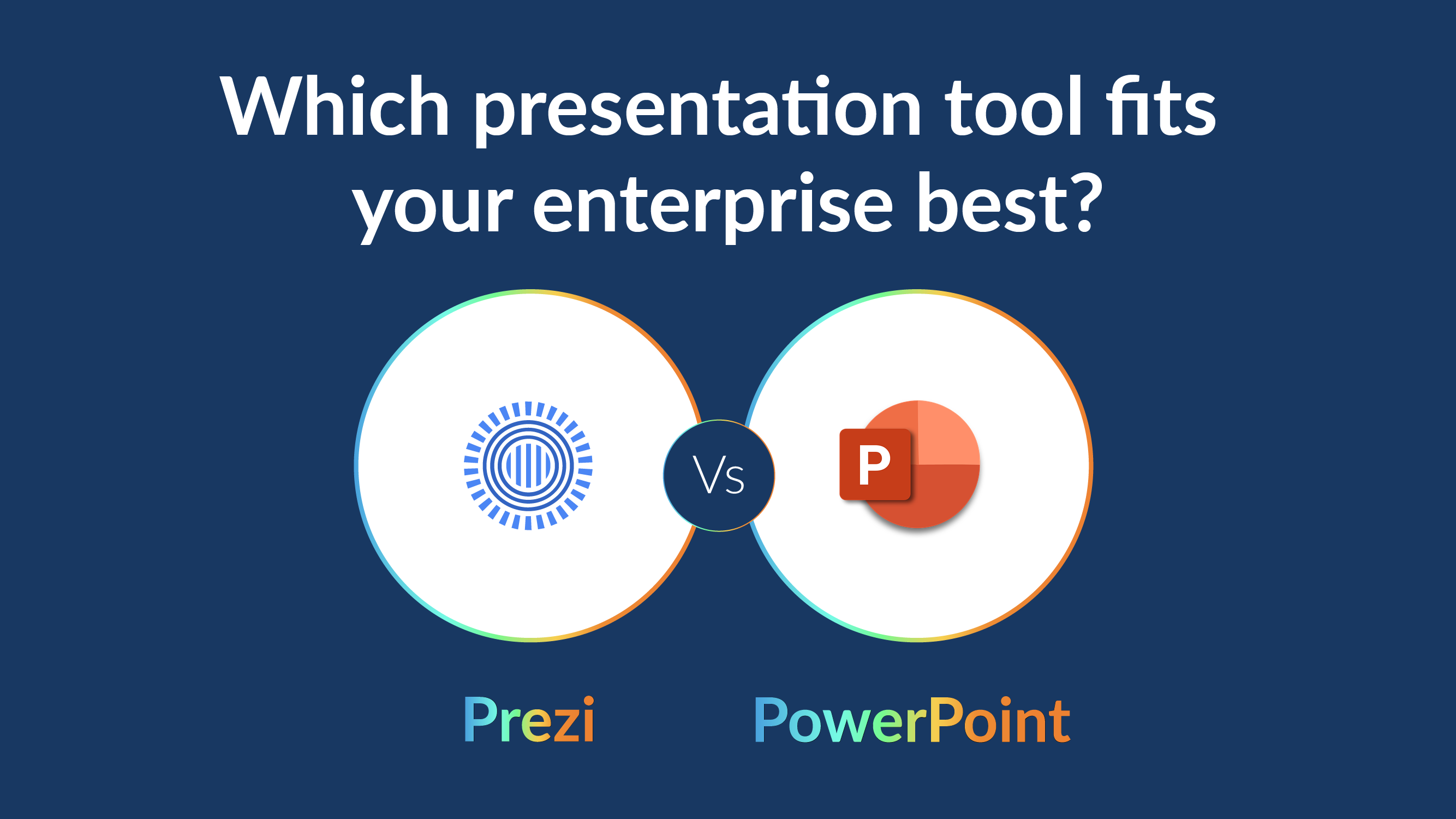It all starts with ‘why’: Outlever Co-Founder Melissa Rosenthal’s strategies for curing blank-slide syndrome
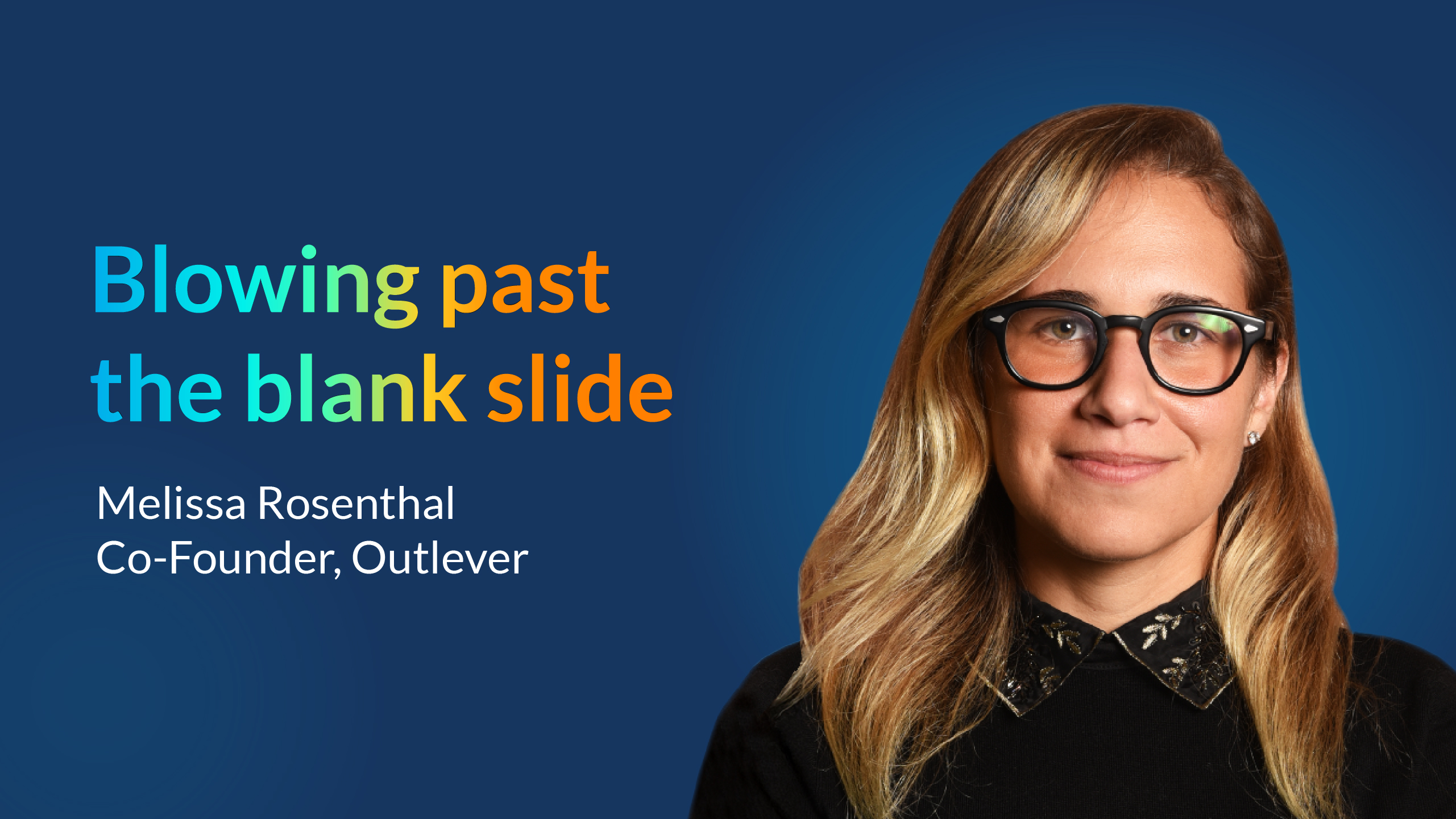
It’s happening again.
You’ve got a deck to create for the eyes of the C-suite. It’s been 45 minutes, but you’re frozen. All you’ve got are sweating palms, spinning thoughts, and a blank slide waiting to be filled.
You know there are infinite ways to organize information, showcase data, and share insights. Unfortunately, that’s part of the problem: these endless possibilities can make it difficult to put anything on the page.
At Prezent, we call this blank-slide syndrome. It can stop even the most talented, strategic mind from creating a presentation that wows the room.
This isn’t just a one-off presentation problem, either. It can become a chronic organizational condition that undermines effective business communication and synergy.
Strong business presentations are essential, whether you’re pitching, reporting, onboarding, or aligning—so it’s critical to move past blank-slide syndrome.
With can’t-miss insights from Melissa Rosenthal, Co-Founder at Outlever, this article offers brainstorming frameworks, planning strategies, and creative shortcuts to help you go from idea to impact faster, without the sweaty palms.
Start with the “why,” not the slides
One of the biggest presentation mistakes is spending hours on slide design, then assuming the information will flow beautifully and hit every strategic point. (That would be nice, wouldn’t it?)
According to Melissa, a slide design-first approach might not be the best place to start. As Co-Founder at Outlever, Melissa transforms brands into the top news source in their industry by fostering open conversations with their ICPs and building relationships that cascade into sales.
Before starting a new presentation, Melissa believes you first need to understand the purpose—the big “why” of what you are trying to communicate:
- What’s the goal of the presentation—is it to persuade, inform, align, or inspire?
- Who is your audience, and what matters to them?
- What should they know, feel, or do after viewing the presentation?
“You need to think about the goals and what’s in it for the audience,” she says. “What are the takeaways of what you want to accomplish with the presentation? Start outlining from there.”
Melissa suggests merging this knowledge with the company’s viewpoints, perspectives, talking points, and values, then integrating this narrative into one presentation framework.
A great potential starting point is the “unrestricted brainstorm.” Jot your ideas down in a mind map, on paper, or in a Google Doc. (Wherever you do your best work.) You can even invite collaborators to allow all ideas to meld.
She believes your biggest opportunity to nail your presentation is the first slide, while the rest of the deck delivers on its central theme.
“The first slide is the first point at which they’re either going to connect or disengage,” she says. “So you need to do something that understands who you’re speaking to and make that promise. It’s your one time to grab their attention.”
Build a narrative arc
Even if you’re providing the simplest of updates, consider a basic storytelling narrative to present information in a more compelling framework:
- The intro spotlights your role and your work
- The tension/problem sets the stage for the problem you’re trying to solve or the update you’ll share
- The solution/insight dives into the big aha moment of the presentation
- The call-to-action emphasizes collaboration or how this solution could be integrated across the organization
Without these elements, you risk uninspired presentations that lead to glazed-over eyes within the first five minutes.
To ramp up curiosity and substance throughout your next presentation, try the following narrative arcs:
- Before vs. after: What was it like before and after the problem? Showcase the impact of your work and the solution.
- Problem → Possibility → Path: Help your audience see why the problem matters and the path to change it.
- The hero’s journey: Put the audience in the hero’s seat and talk about how solutions or insights can specifically impact their experience at work.
“In creating the framework I ask myself, ‘What is the promise? What do I want the audience to get out of it?’” she notes . “If I’m going to talk about what I believe the future of publishing is or where media stands, what is the story arc to get from point A to point Z?”
Melissa creates a framework by jotting down one-liners of potential slide titles based on a narrative that she’s scoped out, each with its own task in a project management system. From there, she builds the framework of what that idea could look like, along with relevant sub-ideas.
Once all of the information is set, she brainstorms corresponding visuals, whether it’s images, case studies, or interactive elements.
This process helps her distill complex ideas and solutions into a compelling narrative of 10 or 20 slides.
“It’s the biggest decision tree,” she shares. “I break it down into tangible tasks and ideas so they can build off of each other before I develop the initial framework.”
Leveraging these tools and strategies not only builds a compelling story around your data and insights, but it also helps you communicate your ideas clearly.
To help get the inspiration buzzing, our Story Builder tool offers 1,000+ expert-curated storylines to build a new presentation in seconds. Enterprise storylines include all-hands meetings, brand plans, and even industry-specific scenarios. And even better, language is brand-aligned and tailored to your audience.
Collaborate with the right stakeholders
Depending on the topic, audience, or project, you may be working with multiple team members to get the presentation done—and this can create headaches, says Melissa.
“If you’re working on a presentation that’s weeks out, this can give you a lot of time for issues to boil up.”
To avoid the stress, it’s critical to get feedback on your deck early and often, so the content of the presentation can evolve naturally (and not change at the last minute). Don’t limit this feedback to design; make sure the “why” of the presentation shines through and the narrative arc is clear.
Another issue with stakeholder collaboration, according to Melissa, is broadening the feedback cycle. “You’re asking too many people for thoughts in different areas—some of which they may not have expertise in, but they feel obligated to give feedback on,” she says. “In that instance, you’re getting a cluster of feedback that you then don’t know what to do with.”
How you collaborate with stakeholders is as critical as how the presentation is organized. Melissa recommends designing the feedback process around the stakeholders and their expertise.
“I would mark up the deck and assign specific items so the stakeholder can review and check those off,” she says. “You need to understand the point of view of every person involved, including their perspective and where they are best positioned to give feedback. Otherwise, there’s no good way to collaborate on a presentation.”
To go a step further, you can also clearly outline the types of feedback you’re looking for, and even isolate parts of the presentation for them. By setting guardrails, you can keep stakeholders within the bounds of their expertise.
“Without this step, people have feedback on everything, mostly because they feel like they need to versus actually having thoughts to share,” Melissa says. “When you instead say what you’re looking for and the goal of the slide, it really helps. I lay out the parameters very clearly and summarize what I’m looking for.”
To make collaborating on presentations easy, Prezent offers the Prezentation Library, where you can upload and share presentations with your team and key stakeholders in a centralized hub. Anonymize any content you’d like to remove, corresponding with Melissa’s suggestion of limiting access for feedback or hiding sensitive data.
Play around with presentation visuals
If you’re being tormented by blank-slide syndrome, try shifting your attention to a visual-first perspective.
“Some presentations are more visually oriented than others,” Melissa says. “I prefer working with a text-based narrative, but others might use visual generative tools to ask, ‘Design me a chart or graph that summarizes this.’ The way information is visualized can spark entirely new ideas about how it should be presented.”
There’s no right or wrong approach here. For people who start with images and build a story from there, Prezent’s Slide Library offers more than 35,000 professionally designed slides that can be quickly tailored to your company’s branding, your audience, and the story you want to tell. For a more text-based approach, our Auto Generator feature allows you to instantly generate entire visual presentations from single prompts, uploaded files, or other text inputs.
Experiment with different processes to find what works best for you. Melissa believes that once you’ve found the right approach, AI can become a solid sparring partner for collaboration. The data visualization techniques can spark inspiration for text-based slide narratives and help you view your insights in a different way.
Create dynamic presentation content with contextual intelligence
Blank-slide syndrome isn’t a creative problem. It’s a business problem that can cascade into communication hurdles and weak collaboration. This distinction is critical, especially when considering that every presentation, from the briefest of updates to a foundational sales deck, matters in driving organizational communication.
As a leading AI-powered presentation software company, Prezent solves business communication challenges through contextual intelligence. With our contextually intelligent AI model, Astrid—the only one of its kind for business presentations—you can leverage Specialized Presentation Models (SPMs) that speak to buyer personas in specialized industries from biopharma to tech. With Prezent, the AI business presentation software, you gain a strategic advantage in crafting presentations that truly resonate.
That’s how Prezent helps save up to 90% of the time typically spent on creating presentations—while capturing the elusive “why” faster.
To see what’s possible, schedule a demo with Prezent today.

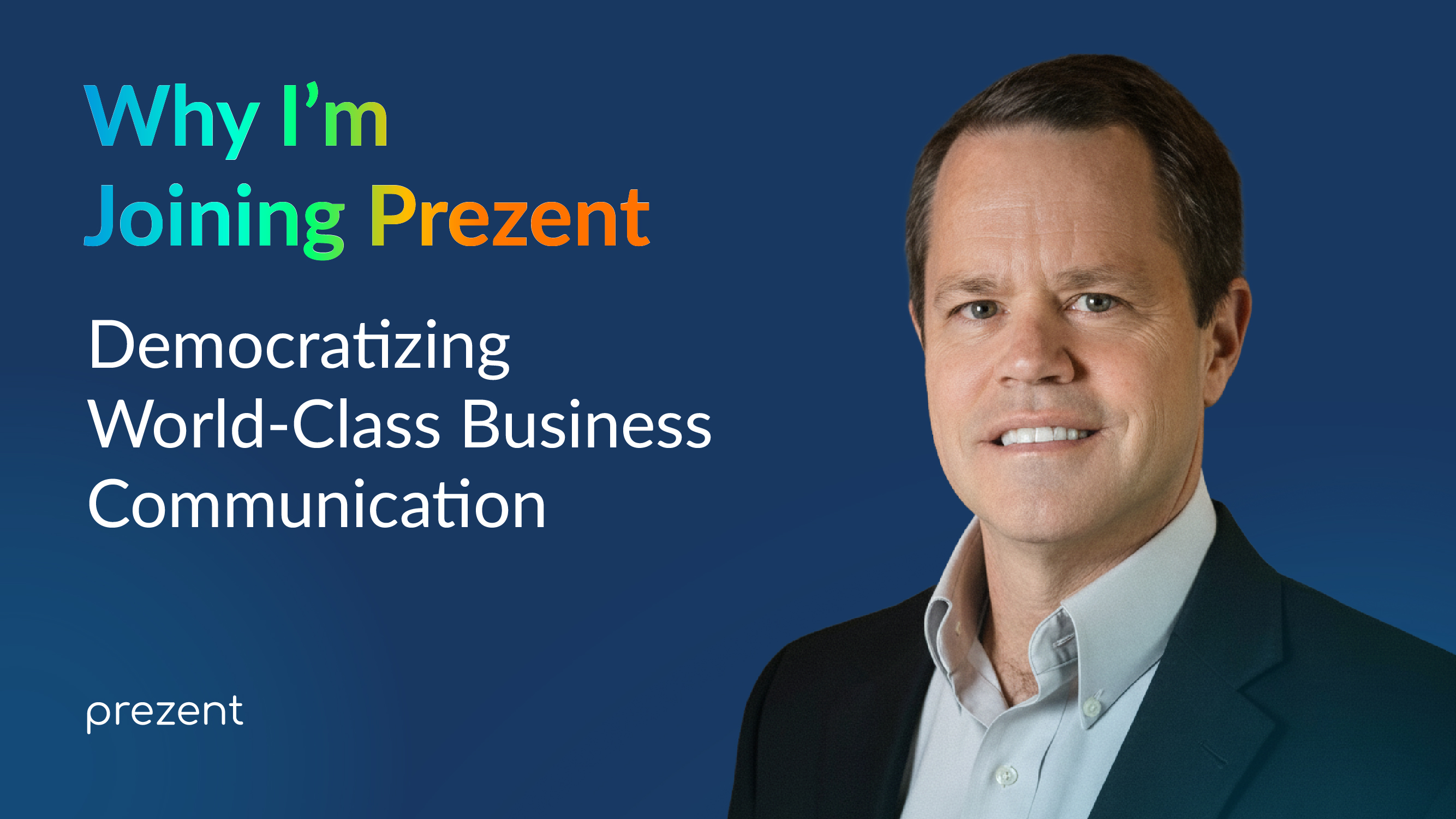
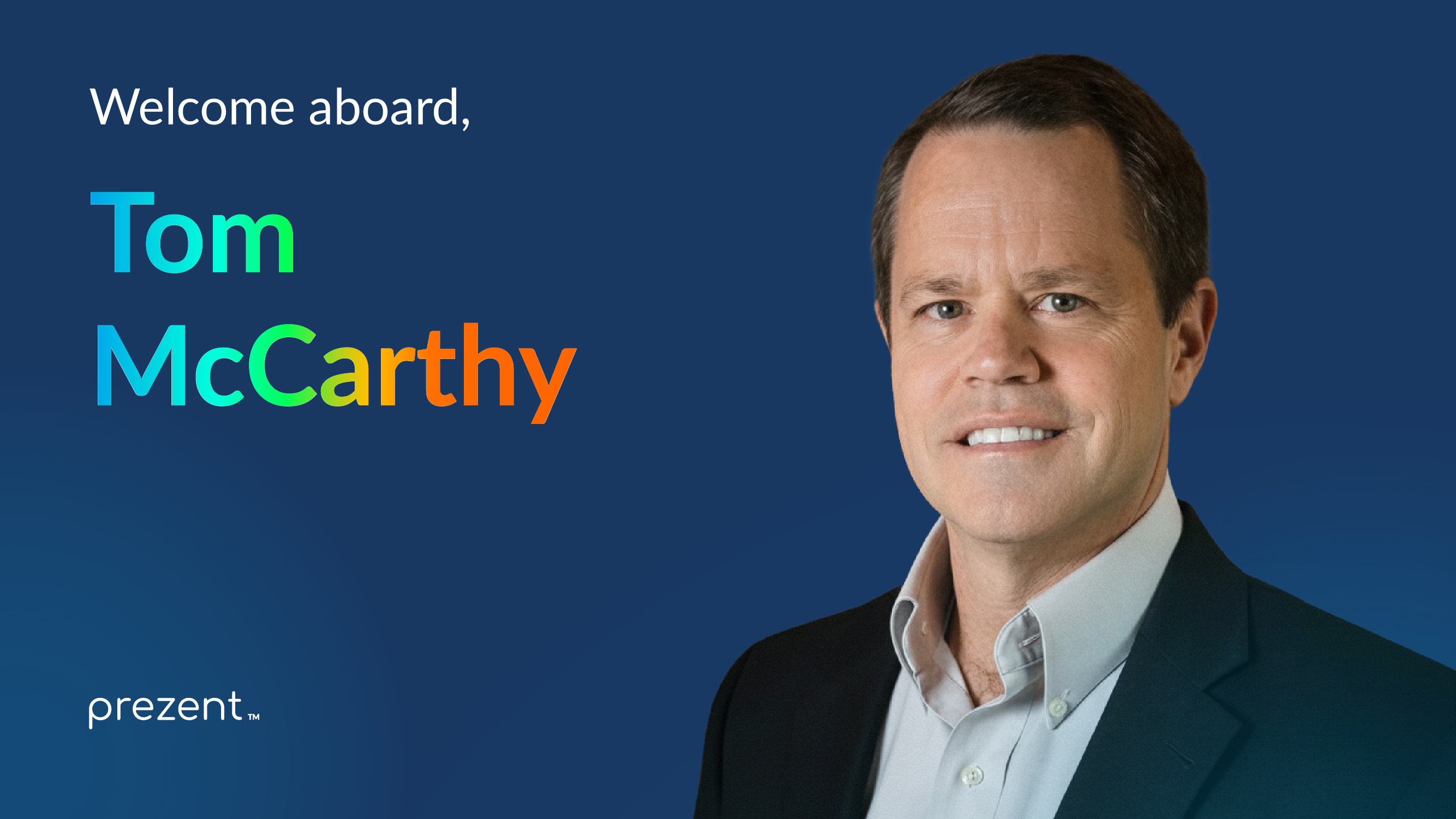
.avif)

